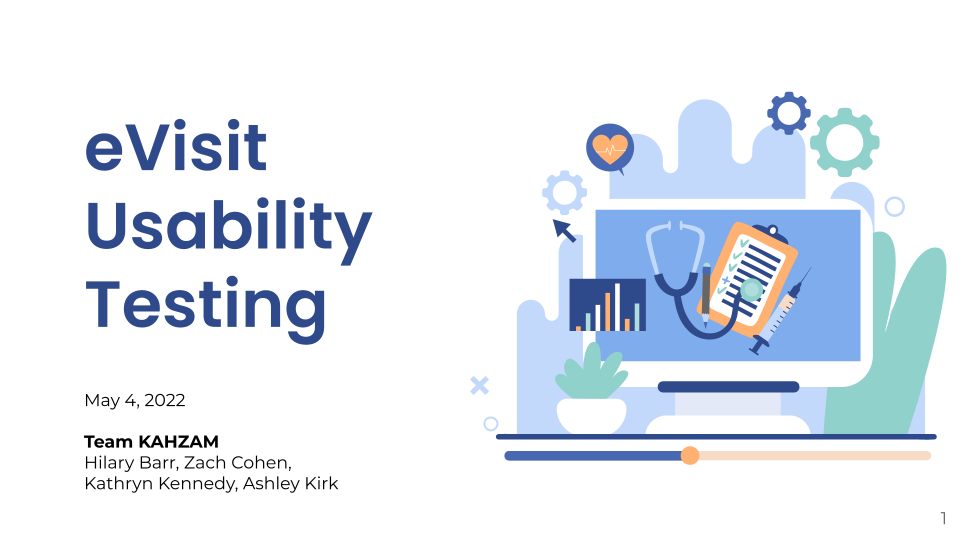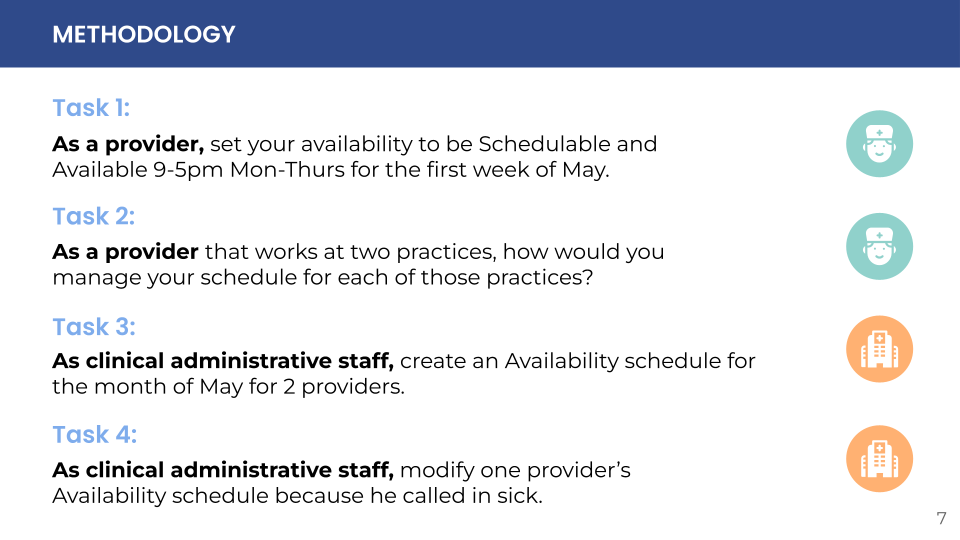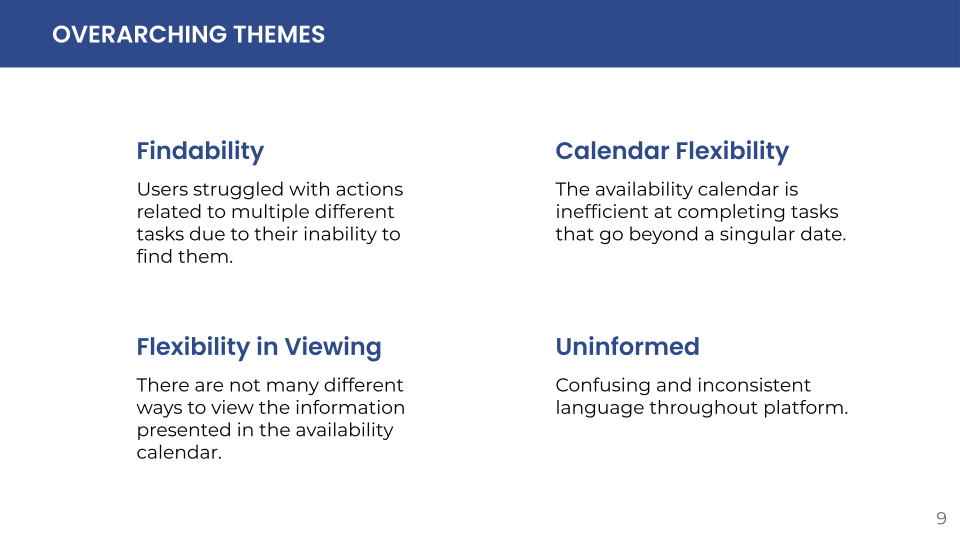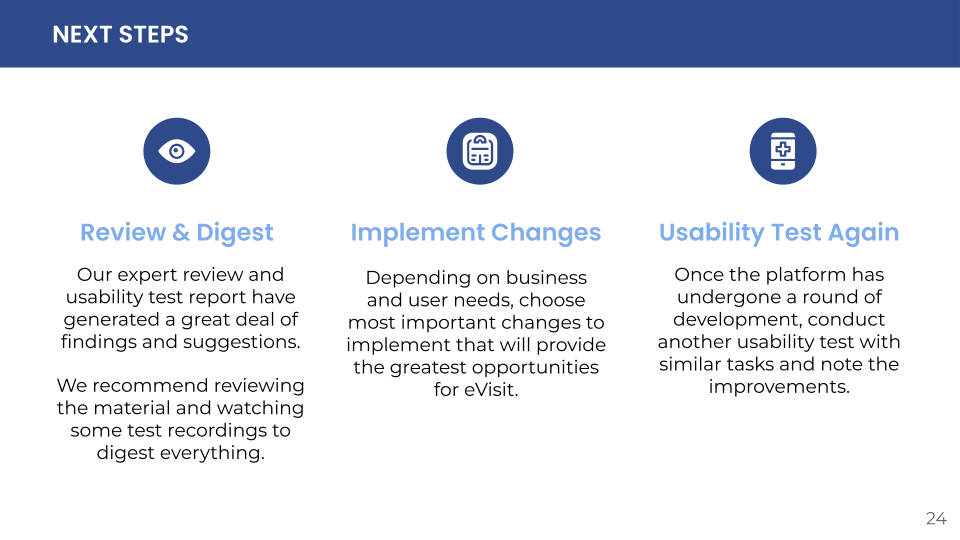Improving software for managing clinician's schedules


We conducted an expert review and usability studies for eVisit, a tele-health company that allows patients to virtually connect with different types of medical providers.
The tasks were created in partnership with eVisit to ensure that the proper success criteria was achieved. Prior to conducting these usability tests, the team performed an expert review and heuristic evaluation of the eVisit platform both individually and as a team.
Because of eVisit's current key difficulties in areas such as the ability to manage only one schedule at a time, the ability to see all provider's schedules for a region at once, and the ability to change schedules more frequently than monthly or weekly, the study was conducted with these future concepts in mind.
The goal of this usability test was to observe how users navigate eVisit's availability interface and to develop targeted design recommendations based off of those findings.
4 researchers from Bentley University, including myself. Our team partnered with eVisit, a tele-health company that allows patients to virtually connect with different types of medical providers. From their team, we worked directly with a UX designer and researcher. I was responsible for conducting and individual expert review, moderating usability tests, and developing sections of the report.

Our team conducted eight one-hour remote user testing sessions in addition to a pilot test. We recruited eight people with relevant backgrounds in healthcare or healthcare administration. Participants were asked to complete a screener and sign a consent form prior to the session. Each session had a single participant, a moderator, and a note-taker.
To begin the test, the participant answered a few preliminary questions about their past experience with eVisit and similar scheduling interfaces. Next, the moderator guided the participant through four predetermined tasks. All tasks centered around eVisit's availability calendar, where providers and administrators set up prospective work hours. Two of the tasks focused on setting and managing a provider's own availability. The remaining two tasks were from an administrator's perspective, managing calendars for multiple providers.
After completing each task, the moderator asked the participant about their experience, expectations and overall impressions of eVisit. At the end of the session, the participant was asked questions about their overall experience while using eVisit and possible suggestions for improvements. After completing the study, participants were contacted by eVisit to receive compensation for their time.

The studies revealed that the most common usability issues that participants encountered were difficulty finding their availability calendar in order to set their availability, indistinct ways to tell which practice the user is currently in, setting their availability for multiple days, and being able to select end dates for repeating schedules in the calendar.
Our team's expert review and usability testing revealed a plethora of opportunities for eVisit regarding the scheduling platform for both scheduling an appointment and for modifying a physician's availability calendar.
The top-level recommendations for eVisit based on the most frequently found issues are as follows:

Overall, eVisit's scheduling platform does not cause significant data loss; however, it does not offer capabilities and features on par with current scheduling platforms in the healthcare industry. We believe that our recommendations included in our report, coupled with those in our expert review, would greatly improve eVisit's platform by offering increased capabilities and flexibility for both the clinical staff and providers.